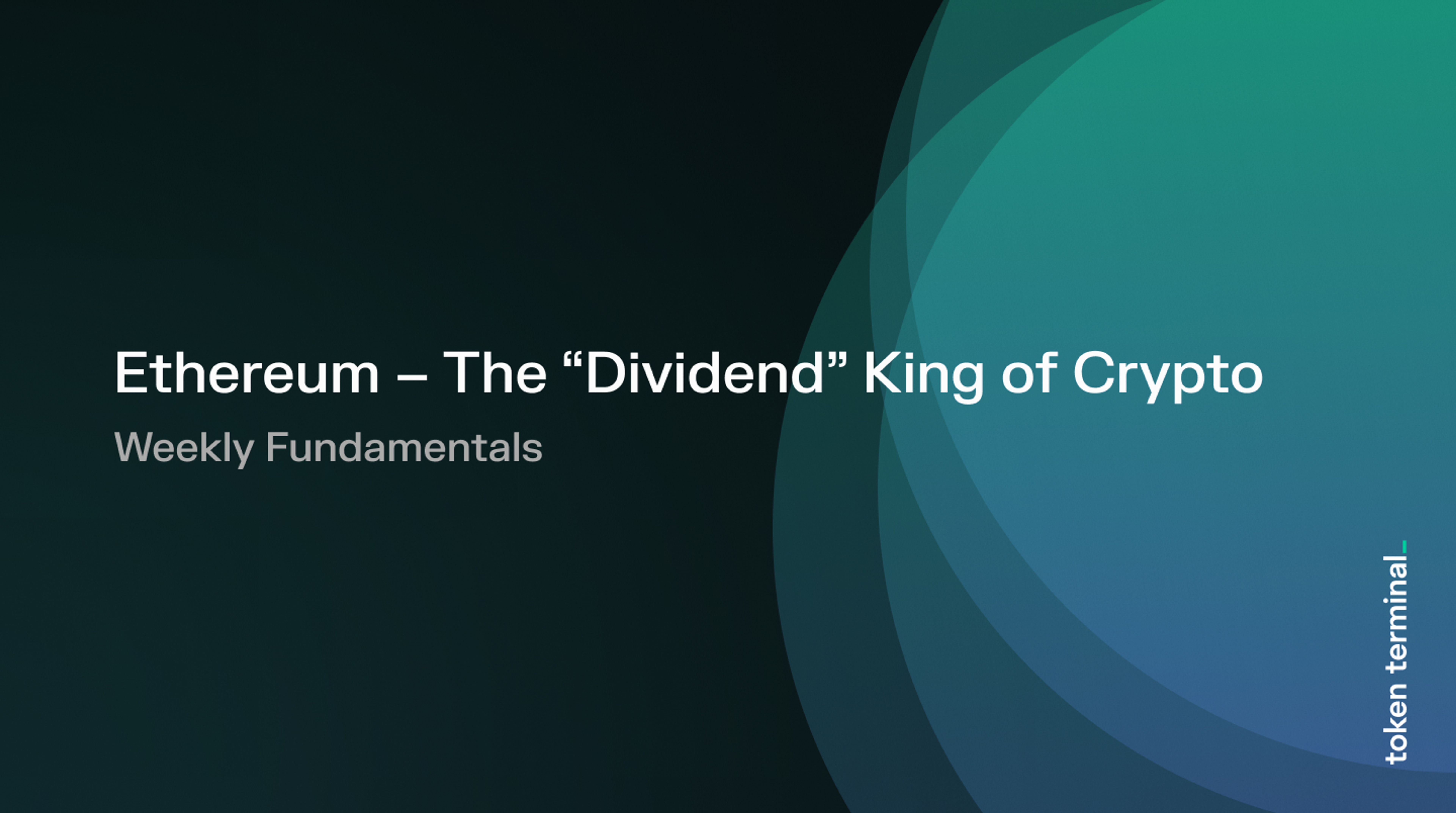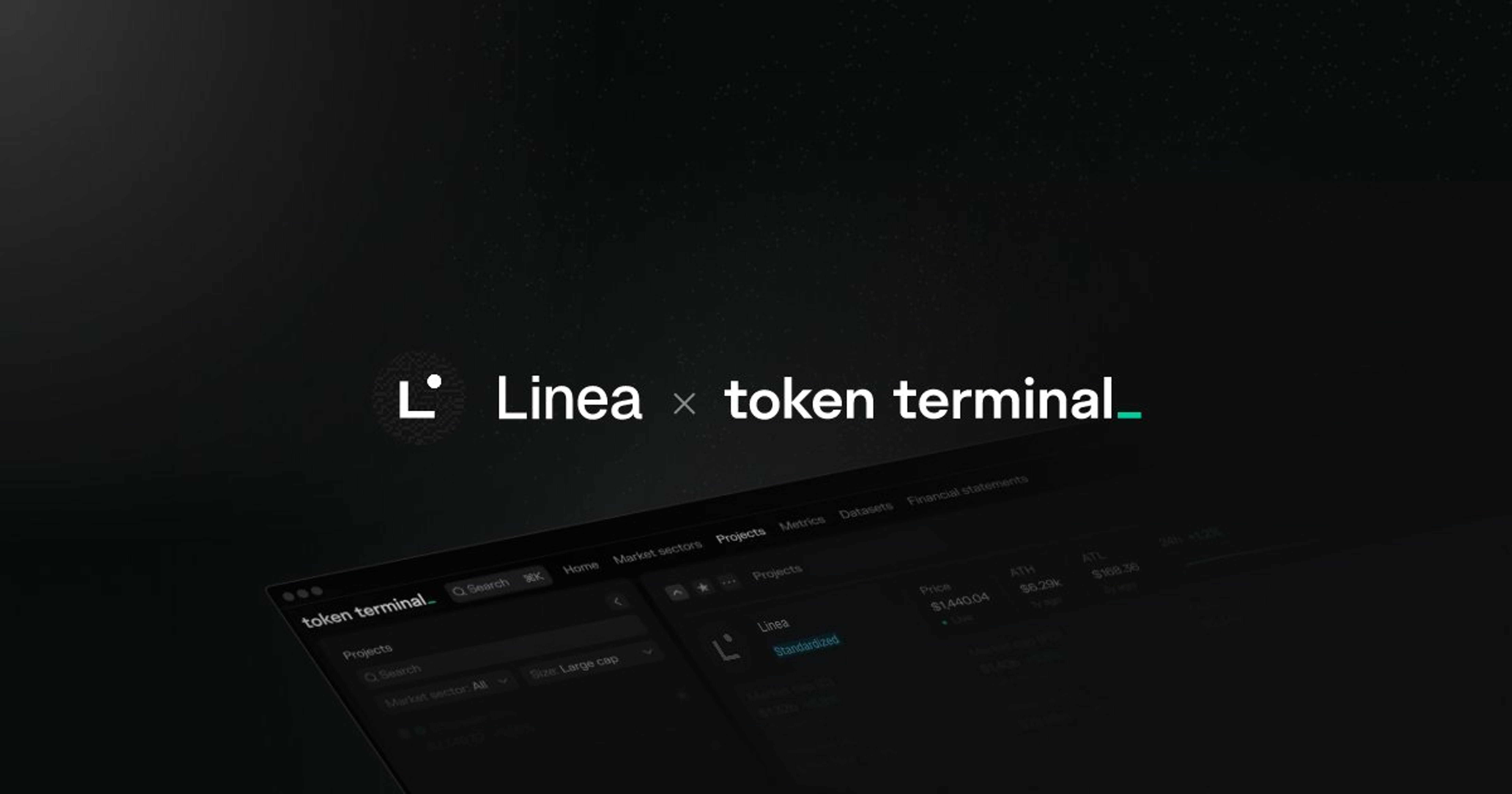Newsletter
A weekly data digest for the leading crypto investors and operators.

Introduction
This week's newsletter dives into the economics of Ethereum. We provide a step-by-step explanation of how the Ethereum network is able to turn a profit. Further, we take a look at how Ethereum benchmarks against some of the leading financial services and technology companies in terms of dividend and buyback yields – two profit distribution-related metrics that are well-known in traditional finance, but rarely talked about in crypto.
Let’s dive in!
1. Ethereum Is a Profitable Blockchain
As a blockchain, Ethereum’s core business model is to sell blockspace to users in exchange for transaction fees. Since The Merge in September 2022, Ethereum has been able to charge higher transaction fees (higher revenue) and share less of the economics with the network’s validators (lower expenses). As a result, the Ethereum blockchain currently operates at a profit (higher earnings). In Q1 ‘24, Ethereum made a profit of $369.08 million.
2. Investors Do Care About Profitability and Cash Flow
Starting out, a company tends to put all effort into getting users. Once a company has users, it needs to figure out how to charge them to generate revenue. Finally, once a company matures, it tends to focus more on the cost structure and how to make sure that expenses do not exceed the revenues. When revenues exceed costs, the company is able to turn a profit.
A profitable company has two options:
- reinvest the earnings back into the business to boost growth, or
- distribute the earnings to shareholders.
Should a company decide to distribute the earnings to its shareholders, it can do it in two ways:
- pay out the income as a dividend, or
- conduct a share buyback and reduce the outstanding amount of shares.
In the former option, the investors earn a steady stream of income from the company, and in the latter, they get to benefit in the form of higher capital gains, as the reduced supply drives up the stock price.
There are two metrics that are widely used in TradFi to assess how much a company pays out to its shareholders:
- Dividend yield: how much does a company pay out in dividend relative to its market capitalization? If a company is worth $100M and pays out $1M in dividends, the dividend yield equals 1%.
- Buyback yield: to what extent does the company use its retained earnings to buy back the company’s own stock? If a company is worth $100M and uses $1M of its earnings to buy back its own shares, the buyback yield equals 1%.
3. Ethereum Lays Out a Path Forward for Blockchain-Based Businesses
Ethereum has a buyback yield of 0.23%, which means that the net income (earnings) it generated over the past 12 months – which was paid out in full to ETH holders through the fee burn mechanism – represents 0.23% of the network’s total market cap. In comparison, an established “protocol” like Visa, was able to pay out 0.71% of its market cap in dividends, and on top of that, buy back VISA shares to an amount that equals 2.25% of its $545.13 billion market capitalization.
It’s worth highlighting that the Ethereum network is only 9 years old, whereas the median age of the other S&P 500 companies on the list is 44 years. This goes to show how scalable (and profitable) Internet-native, blockchain-based businesses can be at best.
Ethereum is an outlier in terms of performance within the crypto market, but at the same time, also an example of what kind of growth is possible for the top performers in crypto. We believe that most entities on this list will be blockchain-based businesses in 10 years.
Relevant links:
- Real-time onchain financials for Ethereum: https://tokenterminal.com/terminal/financial-statements/ethereum
- Real-time onchain financials for Bitcoin: https://tokenterminal.com/terminal/financial-statements/bitcoin
- Real-time onchain financials for Solana: https://tokenterminal.com/terminal/financial-statements/solana
The authors of this content, or members, affiliates, or stakeholders of Token Terminal may be participating or are invested in protocols or tokens mentioned herein. The foregoing statement acts as a disclosure of potential conflicts of interest and is not a recommendation to purchase or invest in any token or participate in any protocol. Token Terminal does not recommend any particular course of action in relation to any token or protocol. The content herein is meant purely for educational and informational purposes only, and should not be relied upon as financial, investment, legal, tax or any other professional or other advice. None of the content and information herein is presented to induce or to attempt to induce any reader or other person to buy, sell or hold any token or participate in any protocol or enter into, or offer to enter into, any agreement for or with a view to buying or selling any token or participating in any protocol. Statements made herein (including statements of opinion, if any) are wholly generic and not tailored to take into account the personal needs and unique circumstances of any reader or any other person. Readers are strongly urged to exercise caution and have regard to their own personal needs and circumstances before making any decision to buy or sell any token or participate in any protocol. Observations and views expressed herein may be changed by Token Terminal at any time without notice. Token Terminal accepts no liability whatsoever for any losses or liabilities arising from the use of or reliance on any of this content.
Stay in the loop
Join our mailing list to get the latest insights!
Continue reading

Customer stories: Token Terminal’s Data Partnership with Linea
Through its partnership with Token Terminal, Linea turns transparency into a competitive advantage and continues to build trust with its growing community.

Introducing Tokenized Assets
Token Terminal is expanding its standardized onchain analytics to cover the rapidly growing category of tokenized real-world assets (RWAs) – starting with stablecoins, tokenized funds, and tokenized stocks.

Customer stories: Token Terminal’s Data Partnership with EigenCloud
Through its partnership with Token Terminal, EigenCloud turns transparency into a competitive advantage and continues to build trust with its growing community.